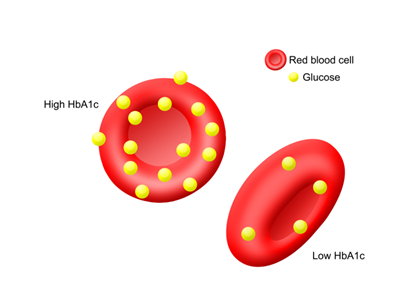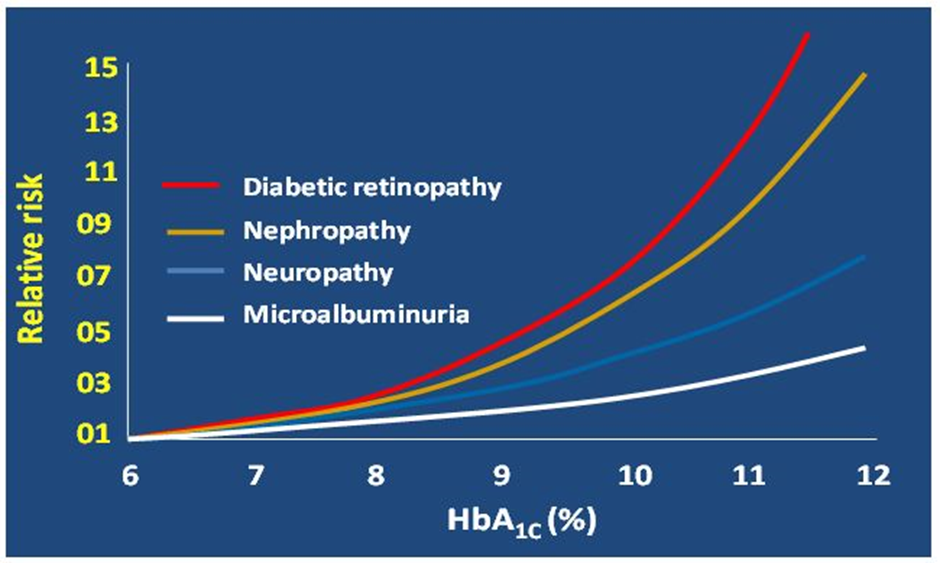What is the HbA1c and complications screening
Every clinic visit, children and adolescents with type 1 diabetes should have a blood test called HbA1c (also called haemoglobin A1c or glycosylated haemoglobin). Haemoglobin is the part of the red blood cell that carries oxygen. HbA1c measures the amount of glucose ‘stuck’ to the haemoglobin. The higher the glucose level is in the blood, the more glucose will become attached to the haemoglobin.
When you attend an RCH diabetes outpatient appointment, your HbA1c will be checked before seeing your doctor, so please come at least 20 minutes before your appointment time to have your fingerprick test. For telehealth appointments, make sure you get your HbA1c checked 1 week earlier so the result is available when you see the doctor. It is helpful if you remember the name of the pathology service in case the result does not arrive at RCH on time.

What level should my HbA1c be?
A target HbA1c of less than 7.0% (53 mmol/mol) is recommended for children in Australia.
Why do we recommend “targets”?
The diabetes targets we recommend at RCH are based on evidence. An 11 year study (1982-1993) of 1,441 people with type 1 diabetes called the Diabetes Control and Complications Trial (DCCT) provided the evidence that by reducing HbA1c, there is a significant reduction in the risk of kidney, nerve and eye damage. Importantly, nearly 30 years later, study of the initial participants is showing that early lower HbA1c leads to better health outcomes years later.
So what does this mean for you and your children? Early close monitoring and aiming for targets in both HbA1c and daily BGLs has long term positive health benefits and being in contact with your diabetes team if targets are not met is important.
HbA1c and the relative risk of complications
This graph is from the collection of data in the DCCT. The evidence shows that having a lower HbA1c also lowers the risks of developing diabetes related complications.
If your HbA1c is high, lowering it will reduce these risks. eg, if you have an HbA1c of less than 7% you are about 10 times less likely to develop damage to the back of the eye (known as retinopathy) than if it is11% *

* Diabetes Control and Complications Trial (DCCT) 1993